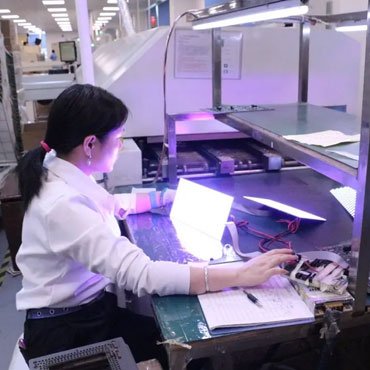The display screen is the only gateway to the internet. Why is that? Imagine you have a high-end computer without a display screen to display the interface; you wouldn’t be able to perform any operations or even know where the mouse pointer is. The importance of display screens is undeniable.
Currently, the two most common types of display screens are IPS and LED displays. They use different screen technologies. Next, we will comprehensively compare IPS and LED display screens, starting from the basics, to help you better understand them.
What is an IPS display?
IPS (In-Plane Switching) is a technology based on TFT (Thin-Film Transistor), so IPS screens are also called TFT screens.
Hitachi was the first company to improve and apply this technology to LCD panels. When they improved TN panels, they discovered a novel display method that was significantly different from the previous TN type, commonly known as “Super TFT.”

This development overcame many shortcomings of earlier monitors and provided a wider viewing angle. Among the three common panel types (TN, VA, IPS), IPS occupies a larger market share in the display industry.

Main Features of IPS displays
IPS displays have high responsiveness, high brightness, and true-to-life colors. Not only do they surpass CRT monitors in display quality, but they also are only one-fifth the size of CRT monitors, leading to the gradual phase-out of CRT monitors from the industry.
Advantages of IPS Displays
- Good Color Reproduction: IPS panels, originally improved from TFT technology, maintain excellent color reproduction, making them a common choice for LCD panels.
- Fast Response Time: IPS panels provide a smooth and high-definition experience for gaming and watching high-definition videos, thanks to their fast response to data from the computer.
- Slim Design: Improved liquid crystal molecule arrangement reduces the thickness of the liquid crystal layers, increasing light transmittance and making the entire panel slimmer.
Disadvantages of IPS Displays
- Light Leakage: Manufacturers sometimes increase the brightness of the backlight too much to achieve more vivid colors, which can cause light leakage if poor quality materials are used.
- Lower Contrast Ratio: IPS monitors generally have a weaker contrast ratio compared to other display devices, typically ranging from 2000:1 to 3000:1.
What is an LED display?
There are two types of LED displays: one uses LEDs as the backlight for an LCD, essentially making it an LCD; the other type uses LED panels for the display. We will focus on the second type.
Main Features of LED Displays
Whether using LEDs as a backlight or as a panel, LED displays are known for their high brightness and energy efficiency.

Advantages of LED Displays
- Adjustable Brightness: LED displays are available in indoor and outdoor series, both offering adjustable brightness.
- Long Lifespan: LED displays can typically last around 100,000 hours, equivalent to 11 years of continuous use.
- Long Viewing Distance: LED displays are ideal for large outdoor advertisements, with viewing distances that can reach hundreds of meters depending on the pixel pitch.
Disadvantages of LED Displays
- High Initial Cost: Due to complex manufacturing processes, the initial cost of LED displays is significantly higher.
- Color Inconsistency: Over time, replacing faulty modules in an LED display can cause color inconsistencies.
- Heavy Weight: LED displays, whether large or small, tend to be bulky and require robust installation setups.
Comparison of IPS and LED Displays
Technology Comparison
With the support of the backlight panel, the IPS display screen uses current to drive the thin film transistors to move regularly to produce images.
The LED display screen receives the programming data sent from the computer through the LED receiving card on each screen, and then converts the programming data into pictures with the support of IC.

From a principle point of view, the operation process of LED display is much more complicated than that of IPS display.
Color Management
LED displays support complete color management systems, allowing for various device integrations. IPS displays’ color management varies based on the chip and manufacturing process, with some supporting HDR and others not.
Flexibility
Both IPS and LED displays are compatible with many devices. However, setting up an LED display requires specialized LED control software, which typically only supports Windows, making IPS displays more flexible in this regard.
Viewing Angles
IPS displays offer horizontal and vertical viewing angles up to 178 degrees, ensuring consistent image quality from any angle. In comparison, LED displays have a slightly lower maximum viewing angle of 170 degrees.
Power Consumption
LED displays are known for their low power consumption since LEDs light up and generate heat with electricity alone. LCDs require both the backlight and liquid crystals to light up, even with LED backlighting, thus consuming more power.
Brightness
LED displays can have brightness from 600-10000nits depending on the LED packaging method selected, while IPS usually only has a brightness of 600-2000nits. LED display screen is the display device that can achieve the highest brightness among all display devices.
LED Packaging Methods and Brightness Differences
| Packaged Type | Brightness |
| COB | 800nits |
| SMD | 800-6000nits |
| DIP | 5000-10000nits |
In summary, both IPS and LED monitors have their own advantages and disadvantages, making them suitable for different applications based on specific needs and preferences.




